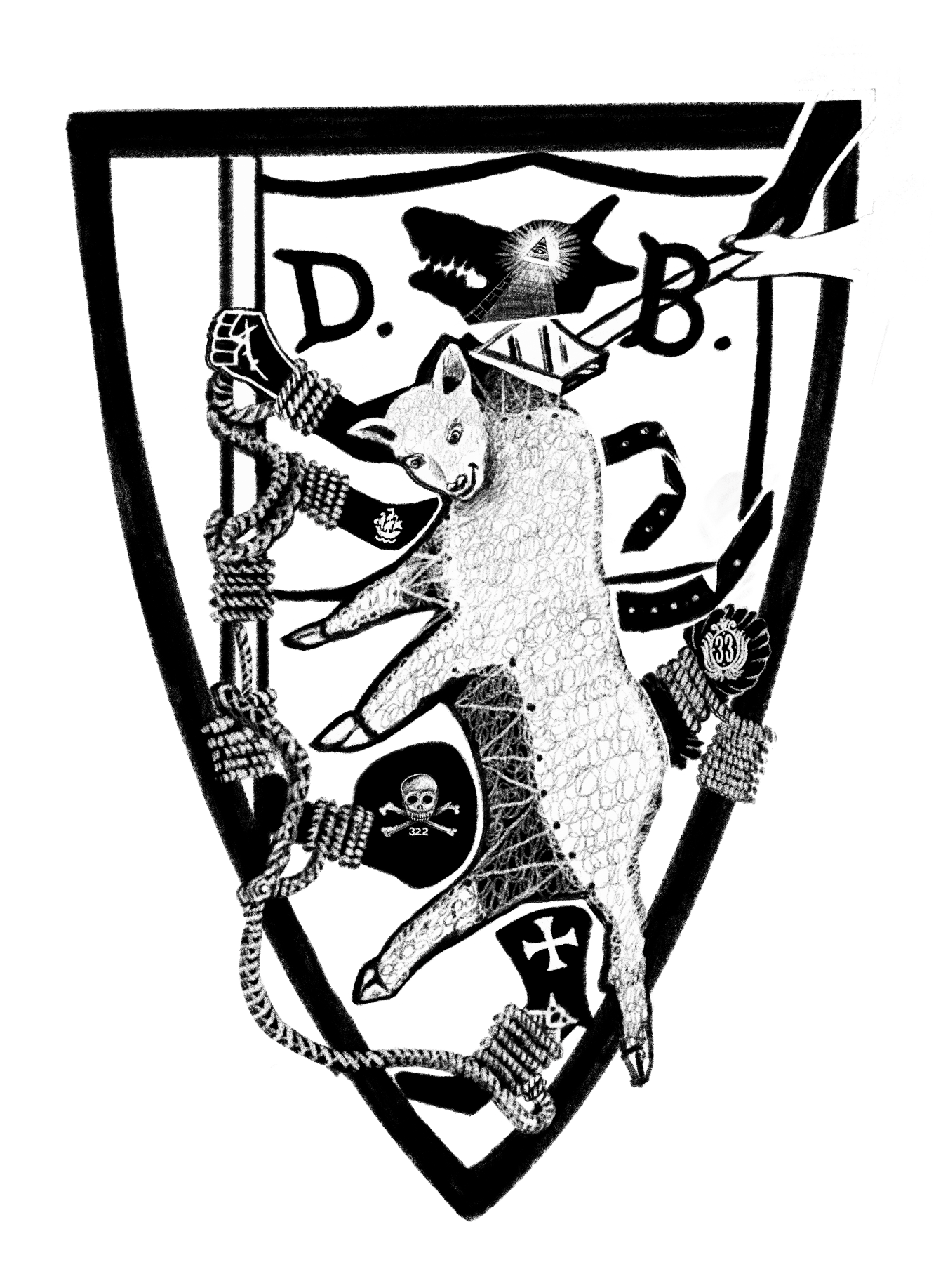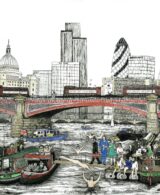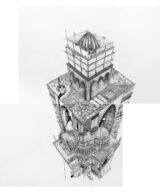“PHONETICALLY SPEAKING” To reflect the fast pace of world news, my blog is probably best served as a stream-of-consciousness text. Fast and unadulterated. With this approach, and on first encounter, text might not seem to scan. This is because I am dyslexic. Instead of keeping the proof-readers busy, I would rather let my blog updates of my visual work stand as a record of my experience of dyslexia, which I am keen that you now get to enjoy too. Unlike some news outlets, I hereby excuse myself the need for a ‘corrections’ section! The excitement of a new language is something I’m quite familiar with, and it is with this ‘joie de vivre’ that I am delighted to guide you through my thought and work processes, more phonetically (than fanatically) speaking.
Keep Calm and Carry on you Medieval Peasants

The Walls Have Two Sides project was juried as a feature exhibit by a panel including Andrew G. Williams from White Cube in conjunction with the multifaith organisation 3FF and Kings College London dedicated to generating conversation and understanding across cultures.
Borrington explored walls which we all encounter every day, but do not see in their entirety or even acknowledge as a wall at all. Starting with a wall of political, social, religious, celebrity culture which we live in and happily spend hours arguing between ourselves who is right and who is wrong. If we are not doing that luckily enough we have the X factor and Eastenders and the national ranks to keepers looking in the wrong direction. Welts we have a giant elephant in the room equal to the great state like entities of the Western world peering down on us all.
Borrington second piece “Hundredth Monkey Effect” was a realisation of the people have the power for peace and harmony and we just need to unite and stop listening to the elites propaganda and break down those walls in the Keep Calm and Carry on you Medieval Peasants picture and the domino effect of the realisation within the masses is instantaneous.
The second piece “Hundredth Monkey Effect” was made in response to Shapira’s “concrete cactus walls” and the discussions which came about whilst working together.
Shapira’s concrete cactus walls were specifically made after the prickly pear – or Israeli sabras – that has been used for some generations as a natural fence or border between neighbors to mark land and deter animals. “Original” sabras were brought over from Mexico to Israel to be planted. Furthermore, the title “sabras” is given to native Israelis that are likened to its fruit, prickly on the outside and sweet on the inside. “I wish I were a sabra, or at least from someplace” Shapira said at the opening reception, “perhaps the whole idea of the native Israeli plant is that it’s a product of migration”. “I wanted to make something larger than myself,” said Shapira, “something that could hurt me, like Matisse’s Oceania, the sea. He constructed those forms, those cut-outs, as a solid – a wall, something impenetrable.” Cactus thorns are embedded in Shapira’s concrete relief.




